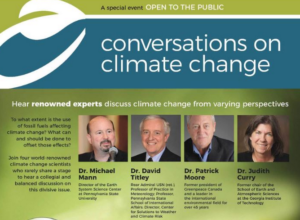
Trouwe lezers weten dat openbare discussies tussen wetenschappelijke protagonisten en antagonisten van de menselijke broeikashypothese (AGW = ‘Anthropogenic Global Warming’) zéér zeldzaam zijn. De protagonisten hebben zich verschanst in hun paradigma en beroepen zich vaak op het autoriteitsargument van de consensus onder hen. Voor hen is AGW een uitgemaakte zaak waarover geen discussie meer nodig is.
Het overgrote merendeel van hen is in overheidsdienst. Zij zijn meestal werknemers van wetenschappelijk instituties die afhankelijk zijn van overheidsfinanciering. En vele nationale overheden zijn van oordeel dat de door de mens veroorzaakte opwarming een dodelijke bedreiging vormt. Op subtiele of soms minder subtiele wijze oefenen overheden via via druk op hen uit om – als ze al kritiek op AGW mochten hebben – daarmee niet naar buiten te komen omdat zulks de publieke steun voor het klimaatbeleid zou kunnen ondermijnen. Zo niet, dan kunnen zij hun veelbelovende carrière wel vergeten. In het uiterste geval wacht hen ontslag.
Aan de andere kant staan de klimaatsceptici. Zij moeten het in de regel zonder publieke financiering, bestaanszekerheid en institutionele inbedding stellen, zoals het VN-klimaatpanel (IPCC) en de nationale meteorologische diensten die bieden voor de protagonisten. Maar in sommige landen heeft het particuliere initiatief hen toch een alternatieve institutionele paraplu geboden – maar nauwelijks geld. De bekendste voorbeelden daarvan zijn het Heartland Instituut in de VS, de ‘Global Warming Policy Foundation’ (GWPF) in het Verenigd Koninkrijk en het ‘Europäisches Institut für Klima und Energie’ (EIKE) in Duitsland. Vooral Heartland in de VS is zeer invloedrijk gebleken en heeft een doorslaggevende rol gespeeld bij de wijziging van het Amerikaanse klimaatbeleid door de regering Trump. Zie ook hier.
Eerder is hier aandacht geschonken aan het voorstel van de nieuwe directeur van het Amerikaanse ‘Environmental Protection Agency’ (EPA), Scott Pruitt, om een publieke discussie te organiseren tussen voor– en tegenstanders van AGW (‘Red Team Versus Blue Team’). Aanvankelijk leek het erop dat een dergelijke bijeenkomst spoedig zou plaatsvinden. Maar, naar verluidt, is dit plan door tegenstand vanuit het Witte Huis afgeblazen, alhoewel Pruitt er nog steeds vanuit lijkt te gaan dat het op enig moment alsnog doorgang zal vinden.
Maar daarom niet getreurd. Het bloed kruipt toch waar het niet gaan kan. Op andere wijze vindt die discussie tóch plaats. Een voorbeeld daarvan is de ’tutorial’ die is geschreven ten behoeve van de rechtszaak die door verschillende Amerikaanse steden is aangespannen tegen een aantal oliemaatschappijen. Zie hier. Maar dat was eigenlijk geen èchte discussie, want eenzijdig.
Recentelijk is het er dan tóch van gekomen, en wel tussen twee protagonisten en twee antagonisten van AGW: Michael Mann, David Titley, Judith Curry en Patrick Moore. De bijeenkomst was niet georganiseerd door een wetenschappelijke instelling, maar een advocatenkantoor! Het doet vermoeden dat de materie in academische kring nog te gevoelig ligt.
Op WUWT publiceerde Anthony Watts een voorbeeldig, uitvoerig verslag van de hand van Brian Lindauer van de bijeenkomst. In het navolgende beperk ik mij tot de weergave van het verslag van de inleidingen van Michael Mann en Judith Curry.
Dr. Michael Mann, at ease and confident at the podium, led off the evening by stating his hope for “a robust conversation” on how to address climate change. His presentation was based around the idea that the only debate to be had is on what to do about man-made climate change. Indeed, he stated this position several times, reinforcing it by clarifying that there’s no worthy debate to be had on whether there’s a problem, or that man has caused it. As a justification for this, Dr. Mann explained that the science behind anthropogenic climate change is verifiable fact. Incontrovertible. Well known and agreed upon for over a hundred years.
Of all the claims made throughout the evening, this is the one I found to be the most personally problematic. Clearly scientists such as Curry and Moore aren’t, to borrow a tired phrase, “denying” the basic science of atmospheric and radiative physics. To claim otherwise, or even to imply through omission, that they do so is unfair, untrue, and frankly, does nothing to increase the credibility of the presenter.
At any rate, moving on, as anyone familiar with this subject could guess, Dr. Mann’s presentation centered on his “iconic” hockey stick graph, noting that this year marks the 20th anniversary of its publication. The point he made sure to emphasize with the hockey stick was the “warming spike” of the late 20th century is unnatural, and unprecedented in tens of thousands of years. He noted that 2014, 2015, and 2016 were each record-breaking years for global temperatures, and cited his 2017 paper which ostensibly demonstrated there was only a 1 in 3000 chance that three consecutive years of global warming would be due to natural causes. In the course of his presentation, Dr. Mann made two specific claims: temperatures were now likely to rise by 4 to 5 degrees Celsius and sea levels by 6 to 8 feet.
Dr. Judith Curry’s careful and precise approach was an interesting contrast to Dr. Mann’s. Whereas he spoke engagingly, but quickly, Dr. Curry never broke stride from her measured and deliberate pace. I’m not sure how much lecturing she did during her tenure at Georgia Tech, but she certainly seemed practiced and poised at the podium during her presentation.
In it she systematically described how she moved from agreement with the IPCC to a skeptic position. She noted the areas where there is agreement between scientists: that global temperatures have increased, that humans have contributed to the rise in CO2, and that CO2 is a greenhouse gas. She also pointed out the crucial point of disagreement was not related to these basic scientific premises, but rather, was in how much of the temperature increase can be attributed to CO2. She pointed out that upon deeper investigation, many of the observations used by scientists, such as Dr. Mann, to support the man-made climate change theory had natural explanations, and needed no help from CO2 to understand. Seal level rise made its second appearance for the evening, when Dr. Curry used it as a specific example that had natural explanations.
She also presented a clear delineation between the two competing understandings of the climate: CO2 Control Knob versus Natural Variability. If you were interested in summarizing Dr. Curry’s general position on from this one brief presentation, you would conclude that she strongly believes “you get what you get” with the earth’s climate, and that’s it’s unlikely that mankind has forced any significant perturbation.
It’s interesting to note that Dr. Curry took the time in her short presentation to describe the madhouse effect, and how it’s being played out in the climate science community. I found her most scathing critique of the night summed up in her first point on this: a “rampant overconfidence in an overly simplistic theory of climate change”. Without claiming to know her personally, I would describe this as classic Curry. Precise. Sharp. And to the point.
Voor het volledig verslag zie hier.
Men zou wensen dat zo’n bijeenkomst ook in Europa mogelijk zou zijn om een einde te maken aan de pro-AGW ideologische verblinding, die een klimaatbeleid legitimeert dat leidt tot astronomische welvaartsverliezen, zonder ook maar enig aantoonbaar klimaateffect te sorteren.
Verplichte kost voor klimatofielen van alle gezindten.

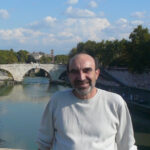
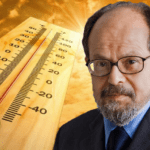
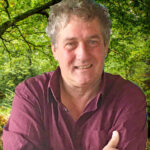

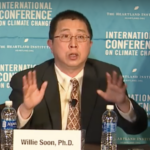
Misschien dat dit artikel van vandaag hier wel bij past . Bij de VK beginnen ze al een beetje te draaien ( ook een artikel over uitfaseren van bodiesel) https://www.volkskrant.nl/columns-opinie/klimaatgoeroe-ed-nijpels-redt-de-planeet-namens-de-vrrroempartij~b90333fa/
“Laten we nu eindelijk eens de lucht- en de scheepvaart aanpakken, zegt Ed van de vrrroempartij..”
Google Inc. (van o.a. de zoekmachine) blijkt/lijkt/schijnt jaarlijks meer CO2 uit te stoten dan de wereldwijde luchtvaartsector.
En wat te denken van het mijnen van de elektronische muntjes (bitcoin o.a.)?
Of van andere zegeningen afkomstig uit de ICT-wereld, zoals zonder echt na te denken (dus nutteloos) klimaatmodellen laten draaien op supercomputers?
Volgens mij zit het anders Bert. De Volkskrant en andere kranten doen verslag van wat er gebeurt in de maatschappij / wereld. Natuurlijk columns maar uiteraard ook uitgebreid nieuws over verhoogde ijssmelt op de Zuidpool. Anders dan hier niet vooringenomen maar verslag doen.
Climategate zou serieuzer worden genomen indien er betere stukken komen en minder of geen reacties. Die zijn eigenlijk altijd hetzelfde.
ja, @ Geert dat laatste is geheel waar. (Bedenk ’s een andere tekst :-) ) Ik ben heel erg blij met Climategate waar het klimaat, energie en de energietransitie in al zijn facetten langskomt. Vele malen betere en betrouwbare informatie dan wat de Volkskrant en de Trouw haar lezers voorschotelen in artikelen die niet zelden door de jongste bediende in elkaar zijn geknutseld en waarvan de inhoud op voorhand vaststaat. Daarop was dit artikel een uitzondering .
Verder ben ik het eens met uw vaststelling dat het hier meestal net een kindergarten is, maar ja, zo gaat het overal op internet. Ik vind het -toch- ook goed dat de redacteur elk vorm van partijdigheid wil vermijden door trollen vrij hun gang te laten gaan alhier. Anders dan bv op de site van Verheggen, waar onwelgevallige bezoekers vriendelijk doch dringend wordt meegedeeld dat ze niet welkom zijn. Dan is er geen discussie meer en kan het reactie gedeelte net zo goed worden gesloten .
Net name de laatste berichten vind ik erg interessant en hoopgevend. Hopelijk dat de site ook aantrekkelijker wordt voor jongeren en vrouwen vooral, die het nog steeds massaal laten afweten. Inderdaad, anders blijft het maar een club van ouwe brompotten.
haha @bert. Hoe kun je nou zeggen dat Climategate een betrouwbaar medium is met evenwichtige berichtgeving. Ik denk dat alleen die oude brompotten hier dat vinden maar grosso modo is Climategate juist het tegenovergestelde van wat jij beweert.
Ik vind het ook knap dat Henkdj, die jij dus een trol noemt, het steeds kan opbrengen om wel evenwichtig te reageren.
Ik zou allang afgehaakt zijn.
Nou ja, dan ga jij toch lekker de `volkskrant kijken . ?
Geert, zou je dit dan willen doen, afhaken.
bert, vind jij echt dat climategate betrouwbaar is? Kijk gewoon eventjes naar mijn reacties van “15 juni 2018 om 13:13” en “15 juni 2018 om 13:15”. Reageer daar eens inhoudelijk op!
Henk,
je bespaart je medediscussianten veel tijd door te refereren naar een link ipv een datum en tijd.
Helaas betaalmuur….
“Trouwe lezers weten dat openbare discussies tussen wetenschappelijke protagonisten en antagonisten van de menselijke broeikashypothese (AGW = ‘Anthropogenic Global Warming’) zéér zeldzaam zijn”
De verklaring is exact dezelfde al waarom er nagenoeg geen discussies zijn over homeopathie tussen artsen en kwakzalvers, of over evolutie tussen wetenschappers en creationisten: aan de ene kant heb je mensen die zich op onderzoek en wetenschap baseren, aan de andere kant hebt je mensen die zich baseren op overtuigingen, zelf geen origineel onderzoek uitvoeren, selectief interpreteren van andermans onderzoek, en wiens conclusie als lang vaststond nog voordat er ook maar enig argument op tafel kwam.
Maar Henk dJ, dan is het toch duidelijk dat de ‘alarmisten’ de kwakzalvers zijn in deze? Zij, die net als homeopaten de kwaal bestrijden met iets wat helemaal niet kan? De vergelijking tussen 450 parts per million die de atmosfeer zou verwarmen en dezelfde hoeveelheid in een vloeistof opgelost, waardoor iemand zou genezen van zijn/haar kwaal. In beide gevallen gaat het om wensdenken, met dit verschil dat in de homeopathie vaak psychologische aspecten een rol spelen waardoor het lijkt te werken. Maar dat geldt natuurlijk niet voor een energievoorziening. Daarom wordt energie tegenwoordig verkocht door kwakzalvers, zoals het bedrijf VAN de BRON, dat daarvoor een heel leger onschuldige en onwetende studenten heeft ingehuurd, die graag een centje willen bijverdienen, die ons dan bij het doen van de boodschappen terroriseren met de homeopathische leer van het bedrijf.
Bert, het aantal ppm van CO2 is ongeveer evenveel als het aantal ppm van cyaankali dat dodelijk is. Dus jou drogredenering is gewoon “wensdenken”.
Bovendien, in homeopathie gaat het niet over 1 in 1,000,000, maar over 1 in 1,000,000,000,000,000,000,000 en nog hogere verdunningen!
Henk dj.
Je moet eens ophouden met die onzinnige vergelijking tusse CO2 en cyaankali. Er is je al meermaals op gewezen maar deze vergelijking gaat volkomen mank. Cyaankali in de vrije natuur doet helemaal niks.
Alleen als er een paar molekulen de cel van levende organisme binnendringt blokkeert dat direkt de celademhaling. Zonder celademhaling komt er geen energie vrij en houdt het leven binnen een minuut op. Cyaankali is dus direkt dodelijk voor levende organismen.
CO2 als IR-gas heeft dan ook niks, maar dan ook echt niks te maken met toxiciteit voor levende organismen.
Het zou je sieren als je niet steeds de diskussie probeert te verzieken met dit soort onzinnige statements. Maar wees nu eens opbouwend en leg nu iedereen eens uit hoe 400 ppm CO2 zoveel warmtestraling kan verplaatsen/vasthouden/tegenhouden dat het 1o C opwarmt in de atmosfeer. Ik zie niet hoe dat mechanisme zou moeten werken, dus leg het me even uit.
Aad,
het gaat niet om de 400 ppm CO2 in de atmosfeer. Die doet niets. Het gaat om toename van CO2, die wordt verondersteld de toename in temperatuur te verklaren. De gemiddelde CO2 toename over de afgelopen 100 jaar is circa 1 ppm per jaar. Die 1 ppm wordt dan verondersteld een opwarmingssnelheid van 0,5 graad per eeuw te veroorzaken. Hoe gek kun je het maken.
@Aad Dit valt ook niet uit te leggen, want over de verre geschiedenis blijkt er geen verband tussen CO2-verandering en temperatuurverandering. In bepaald periodes was er wel een omgekeerd verband, dus een waarin CO2 temperatuurverandering volgde. Er is een periode van slechts 18 jaar (1980 tot 1998) met een goede positieve correlatie. Alarmisten willen die povere paar jaartjes nog wel eens als hét bewijs aanvoeren en komen dan met een selectief Woodfortrees- trendlijntje. Dezulken zijn nog steeds geïmponeerd door Michael Mann’s weerlegde hockeystickgrafiek en het incestueuze kliekje van 44 collega’s rondom hem.
Hetzler, ik zal het nog maar eens proberen uit te leggen, alhoewel ik vrees dat je het met je cognitieve dissonantie gewoon weer zult negeren en zult verder gaan met je leugens te verspreiden:
1/ De “hockeystickgrafiek” is helemaal niet weerlegd. Zoals ik nog maar twee dagen geleden al schreef, in reactie op dezelfde leugen die je toen al verkondigde: “de essentie van die analyse is sindsdien al tig keer bevestigd, met andere datasets, andere methodes, additionele metingen, een extra 20 jaar van temperatuurdata enz. Maar toch blijven AGW-negationisten dit allemaal ontkennen…” En toch blijft Hetzler en het “incestueuze kliekje rondom hem” maar doordrammen hierover.
2/ Er is wel degelijk een hele hoop bewijs dat de huidige klimaatopwarming te wijten is aan de stijging in CO2. Een belangrijke publicatie hierover is http://www.nature.com/articles/srep21691, maar daarover lees je natuurlijk niets op klimaatsceptische sites. Zo’n degelijk onderzoek, dat wordt best maar genegeerd…
Erik stelt: “het gaat niet om de 400 ppm CO2 in de atmosfeer. Die doet niets.”
Het doet wel iets. Het vangt infraroodstraling uitgestraald door de aarde dat vervolgens weer alle kanten wordt uitgestraald, o.a. een deel weer terug richting de aarde. En dat kun je gewoon meten. Over een langere periode. En dat laat een stijging zien. Q.E.D.
Eigenlijk ben ik wel blij dat Michael Mann zo halstarrig vast blijft houden aan zijn hockeystick/theorie. Daarmee ondergraaft ie zelf zijn eigen theorie. Daar heb je geen opponenten voor nodig. Ga zo door Mich.
Mann toont aan dat er geen enkele temperatuursverandering is geweest de laatste 1000 jaar, behalve een sterke stijging na 1950. Door alle natuurlijke forcings uit te sluiten moet je dan wel uitkomen op CO2 als grote boosdoener. Mag ik er dan even van uit gaan dat die natuurlijke forcings ook heden ten dage niets afdoen aan de temperatuur dan heeft Mann een wetenschappelijk probleem. Waarom zet die temperatuurstijging niet door na 2000? Aan CO2 kan het niet liggen.
@Henk dj
Je verwijst steeds naar het ´onderzoek´ van Stip et al. In het begin van zijn betoog benadrukt ie zelf dat correlatie niet automatisch causaliteit betekent. Toch slaagt ie er in om met statistiek aan te tonen dat er wel een causaal verband is tussen CO2 en temperatuur. Met statistiek kun je nooit een causaal verband aantonen. Dat is geen wetenschap. Dat zo´n onderzoek peer-revieuwed in een wetenschappelijk tijdschrift komt verbaast me hogelijk. Maar goed, ongeveer 80% van de peer-revieuwed artikelen kan binnen een jaar weer in de prullenbak, daar kan deze ook weer bij.
Ronald
Als je in het CO2 verhaal gelooft moet je het wel correct hanteren. Een constante waarde van 400 ppm CO2 doet niets aan temperatuur toename.
Toename is een verandering die door een andere verandering teweeg gebracht wordt. In dit geval claimt men dat 1 ppm erbij per jaar een opwarmsnelheid van 0,5 graad per eeuw geeft (HadCrut). Zeer onwaarschijnlijk.
Erik, als je nu ook al je eigen woorden gaat verdraaien. Het is heel simpel: 400 ppm CO2 doet wel degelijk iets (280 ppm ook, maar minder). En iedere extra ppm doet er een schepje bovenop.
Ronald,
Alleen het schepje van 1 ppm erbij kan iets aan temperatuur toename doen.
(als je er in gelooft, ik ben meer een heyden)
Dus heel simpel Ronald, ik voeg 1 ppm toe, en ik krijg 0,5/100 graad opwarming.
Dit doe ik 100 jaar, dan heb ik dus 100 ppm toegevoegd en de opwarming is dan 0,5 *100/100= 0,5 graad.
Inderdaad Erik, aangenomen dat de door jou gebruikte climate sensitivity correct is. Maar die ligt met 1.4 onder de grenswaarden gehanteerd door IPCC.
Metingen op Mauna Loa voor april 2015, 2016, 2017, 2018 zijn: 404.84, 409.39, 411.27, 412.37. Een gemiddelde stijging over deze periode van 1.75 ppm per jaar. Dus jouw 0.5 daar even mee vermenigvuldigen geeft 0.88 graad.
Als we voor klimaatgevoeligheid het centrum van de IPCC grenswaarden ([1.5,4.5]) nemen, dus 3 dan komen we aan een opwarming van 0.88*3/1.4 = 1.89 graad. Die uitkomst is een stuk waarschijnlijker dan jouw 0.5, uitgaande van de huidige stand van de wetenschap en CO2 waarnemingen.
Ronald,
Ik haal mijn klimaat gevoeligheid uit de hadcrut 4 data. De hele reeks geeft een lin trend van 0,5 graad per eeuw. Op basis van 100 jaar met 100 ppm krijgen we dan de door jou genoemde 1,4 graad per 2*CO2
Je kunt natuurlijk altijd wel een korte periode cherry picken om iets anders te vinden.
Flauw van je Erik. Ik cherry-pick helemaal geen kortere periode om een andere klimaatgevoeligheid te krijgen. Jouw 1 ppm CO2 stijging per jaar is gewoon veel te laag en niet in overeenstemming met waarnemingen zoals die op Mauna Loa
Dus hiermee heeft u eigen onzinverhaal bevestigd . Dank daarvoor .
De verklaring is dat de warmisten het debat niet durven aan te gaan. Hou aub op met uw walgelijke leugens.
“De protagonisten hebben zich verschanst in hun paradigma en beroepen zich vaak op het autoriteitsargument van de consensus onder hen”
Euh nee, dat doen ze niet. Ze beroepen zich op wetenschappelijk onderzoek. Omdat er maar één manier is om correct wetenschappelijk onderzoek correct te interpreteren, komt iedereen dan wel automatisch tot een consensus. Maar ze beroepen zich dus NIET op autoriteit of consensus. Het zijn enkel de AGW-negationisten die dit zo simplistisch verdraaien (en het dan zelfs nog graag hebben over “handopsteken”). Voor zover ik me kan herinneren, staat er nergens in de IPCC rapporten iets dat louter gebaseerd is op autoriteitsargument.
“Aan de andere kant staan de klimaatsceptici. Zij moeten het in de regel zonder publieke financiering, bestaanszekerheid en institutionele inbedding stellen. Maar in sommige landen heeft het particuliere initiatief hen toch een alternatieve institutionele paraplu geboden – maar nauwelijks geld”
Ahahaha. Wat is dat voor een eufemisme! Het is gewoon keihard lobby-werk! En nog dik betaald ook!
@Hdj Ik hoop niet dat je op die 97% consensus doelt, want dit argument is ondeugdelijk om diverse redenen. 400 jaar geleden stelde 97% van de wetenschappers dat de zon om de aarde draaide. Thans weten we dat de aarde om de zon draait. Dus: ofwel de zon en de aarde hebben van plaats gewisseld ofwel die 97% is slechts een autoriteitsargument.
Verder is het onwaarschijnlijk dat van de ca. 6 miljoen wetenschappers ca. 5,8 mln. het eens zijn met de AGW-hypothese. In feite is die 97% afkomstig van een selectief sommetje namelijk 75/77 klimaatwetenschappers in een enquête onder 10.000 wetenschappers met een respons van 3.000.
Hetzler, ik verwijs je naar www. climategate.nl/2018/03/analyse-van-de-agw-negationist.
Daar heb ik reeds aangetoond dat “In de gevallen die ik ken van een consensus die verkeerd bleek te zijn, was het steeds een consensus gebaseerd op veronderstellingen, geen veronderstelling gebaseerd op decennialang onderzoek door een gemeenschap van wetenschappers. ” Dus 400 jaar geleden was men OVERTUIGD dat de zon om de aarde draaide. Dat is iets heel anders dan onderbouwd op jarenlang wetenschappelijk onderzoek.
En dan de brede consensus waarover men het vaak heeft. Ten eerste, waar haal je het dat dit een consensus zou zijn van “ca. 6 miljoen wetenschappers”? Het is ‘enkel’ een consensus van klimaatwetenschappers. Ten tweede, citeer ik even uit dat artikel waarnaar ik verwees: “Maar kijk gewoon even hier, (Henk dJ 1 maart 2018 om 22:58) en de verwijzingen in die reactie naar eerdere discussies, om vast te stellen dat er nog nooit een AGW–negationist heeft kunnen hard maken dat er geen zeer brede consensus zou zijn. Maar toch, ze proberen hier telkens weer twijfel over te zaaien.” EN dat is ook weer wat jij hier doet: jij negeert weer volledig alle vorige discussies hierover, en je verzint wat cijfers (je geeft in ieder geval geen verwijzing naar waar je die vandaan zou hebben gehaald).
O ja, kijk eerst even naar de ene link die ik opgeef, en probeer daar rekening mee te houden als je reageert. Dan zou je blijk geven van (een beetje) ‘voortschrijdend inzicht’
‘Ahahaha ‘: sterk argument moet ik zeggen. Daarmee toont u nogmaals uw zielig niveau aan. Ik moet uw eerste argument nog zien. Tot meer dan drogredeneringen en loze, niet gefundeerde/gestaafde beweringen lijkt u niet in staat. Het lijkt mij vrij duidelijk dat fraudeur en loudmouth Mann uw grote held is; Wie bij de hond slaapt betrapt zijn vlooien.
Of een debat met Michael Mann (de uitvinder van de alarmistisch geproduceerde klimaat-hockeystickcurve) als serieus en “winst” kan worden genoemd is zeer dubieus. Het wetenschappelijk foute en absurd agressieve verleden van deze mann op zijn critici, dat draagt hij nog steeds met zich mee. En Mann heeft nu nogal wat rechtszaken met zijn kritische opponenten lopen op basis van zijn dubieuze “science”.
Over Ed Nijpels kunnen we typerend kort zijn! Nijpels is een golddigger voor overal waar een politiek dogma is te propageren: catastrofaal klimaat, Parijse-COP21 “klimaatbeheersing, “gratis” windenergie, onzinnige zogenaamde “duurzaam” VVD-beleid, klimaat-ineffectieve uiterst kostbare aard-warmte-pompen en het onbesuisde RutteIII politieke meme “100% van het gas af”. Als het maar ongenuanceerd is kan je Edje voor de politieke kar zetten, als het maar schuift.
https://www.climategate.nl/?s=Michael+Mann
Wanneer je het volledige verslag van deze ‘disucssie’ leest, dan stel je vast dat het helemaal geen discussie was! Het waren gewoon 4 personen die de ene na de andere en presentatei gaven en gepre-selecteerde vragen beantwoorden.
Als je dan naar de inhoud van hun vier presentaties kijkt, dan moet je vaststellen dat zelfs wattsupwiththat niet kan vemijden om te ebschrijven dat de klimaatwetenschappers met feiten komen, en de skeptici met stemmingmakerij:
Mann: “2014, 2015, and 2016 were each record-breaking years for global temperatures, […] there was only a 1 in 3000 chance that three consecutive years of global warming would be due to natural causes”
Curry: probeerde enkel twijfel te zaaien, en het gaat enkel over haar overtuiging “she strongly believes “you get what you get” with the earth’s climate” en dat zij gelooft dat klimaatwetenschap niet meer is dan “the madhouse effect”.
Titley: hij baseerde zich expliciet op wetenschap: “fundamental theory, observations, and predictions”. Hij toont aan dat de voorspelling van 20 jaar geleden zelfs een onderschatting is van wat er ondertussen is gebeurd. Gebaseerd op de harde feiten, kan hij dan ook tot de conclusie komen dat er een verandering aan de gang is, die tot problemen gaat leiden indien er niets aan gedaan wordt.
Moore: doet ook weer mee aan het zaaien van twijfel, door te verwijzen dat er in het verleden niet altijd een verband was tussen CO2 en temperatuur. Verder bespreekt hij het (in zijn visie enkel positieve) effect van meer CO2. EN daarbij negeert hij dus blijkbaar het effect van klimaatopwarming, meer extreem weer (stormen, hittegolven,..), stijgende zeespiegel, …
Dus: klimaatwetenschappers kwamen met feiten, de skeptici presenteerden geen feiten maar probeerden toch op ongegronde wijze twijfel te zaaien. Als je dat kunt concluderen uit een verslag van een skeptische website, dan vraag ik me af hoe overtuigend ‘pro-wetenschap’ die ‘dsicussie wel niet was!
MANN DEBATTEERT NOOIT. Michael Mann heeft structureel het debat met McIntyre ontweken.
De structuur van die avond was dat een debat niet mogelijk was. Dus het zijn de organisatoren die elke discussie hebben “ontweken”.
En hoe je het ook draait of keert, de klimaatwetenschappers zijn de enigen die met data en onderzoeksresultaten kwamen, terwijl de sceptici gewoon prberen twijfel te zaaien met vage en niet-onderbouwde beweringen.
De feiten zijn niet het probleem maar de manier waarop telkens CO2 als schuldige wordt aangewezen. Als de temperatuur stijgt dan is het niet vreemd dat warme jaren zich in het recente verleden hebben voorgedaan. Daar is niets onwaarschijnlijks aan. Maar het simpele feit zegt niets over de oorzaak.
Die opmerking is echt grappig
De feiten zijn, dat ondertussen overvloedig is aangetoond dat CO2 de “schuldige” is.
‘Overvloedig aangetoond…’ ? Ze hebben helemaal niets aangetoond. Van waar haal je dat ? Je bent blijkbaar niet eens op de hoogte van de bewezen manipulatie van Mann’s hockeystick-curve. Dit is geen wetenschapper,maar een religieuze fundamentalist voor wie het doel de middelen heiligt, manipulaties van gegevens,wetenschapsfraude inclusief. Als dit uw geloofsbrieven zijn, dan maak je het mij wel hel makkelijk en hoef ik u in het vervolg niet meer au serieux te nemen. U bewering dat alleen wat u ‘klimaatwetenschappers'(sic) noemt (bij mijn weten bestaat deze discipline niet eens) met ‘feiten’ komen is ronduit belachelijk. Deze zelfverklaarde ‘wetenschappers’ baseren zich enkel op de klimaatmodellen waarvan nog geen enkele voorspelling is uitgekomen. Ik geef wel toe dat het verweer van de opgetrommelde sceptici heel zwak en niet overtuigend was. er zijn dan ook veel betere protagonisten van de sceptici te vinden. In elk geval is de bewijslast dat CO2 geen enkele rol speelt bij de opwarming van de aarde, die overigens al bijna 20 jaar gestagneerd is ondanks een gestage toename van de CO2, overweldigend. Ik zou u ook willen aanraden uw aanmatigende toon wat te milderen enerzijds, en anderzijds en vooral uw manifeste leugens achterwege te houden. Ik raad u ook aan als u op een ernstige manier wilt debatteren over deze belangrijke kwestie,dat u ook eens aan falsificatie doet. Enkel verificatie is geen betrouwbare wetenschappelijke methode, zoals Popper al aantoonde. U kan zich altijd mengen in een discussie op hoog wetenschappelijk niveau, als u dat aandurft, op o.a. de FB-pagina van ‘De CO2-hysterie: zever in pakskes’. Ens kijken of nog zo’n grote bek zal opzetten wanneer u in de vernieling wordt gereden door de wetenschappelijke feitenkennis van de experten op deze FB-pagina
Volgens mij is Judith Curry iemand waar je absoluut niet aan voorbij kan/mag gaan.
Even de voorgeschiedenis van het IPCC.
https://judithcurry.com/2018/01/03/manufacturing-consensus-the-early-history-of-the-ipcc/
En dan vervolgens haar presentatie waar ze de zaken zodanig uiteenzet waar het ook meer dan relevant is.
Beter was dit om te posten onder het artikel hieromtrent, maar in het verloop vind ik het ook even belangrijk hier.
https://judithcurry.com/2018/06/12/the-debate-mann-titley-moore-curry/
Judith Curry en haar presentatie, wat een geweldige wetenschapper die het nodige zo helder uiteen kan zetten…
https://judithcurry.com/2018/06/12/the-debate-mann-titley-moore-curry/